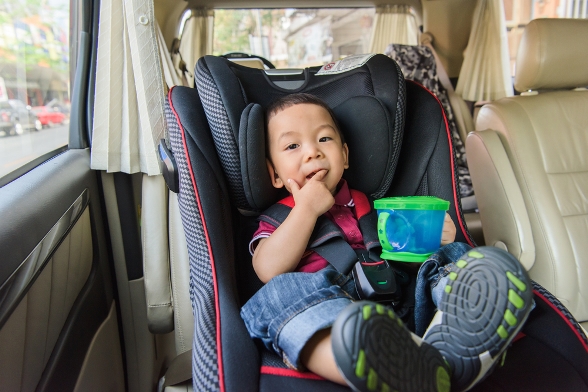Every new parent has struggled with installing their first car seat and asked themselves why something so important has to be so difficult. Here are tips to help parents keep their children safe as they grow from babies to toddlers and beyond.
Why is it so important to use a car seat?
- Car seats are important for the same reason seatbelts are important – they help prevent ejection from the vehicle when accidents occur.
- Until a child is old enough for an adult seat belt to fit them correctly, they must ride in a child safety seat or booster seat.
- The new recommendation is for children to ride in a rear-facing car seat until the age of 2.
What’s the difference between a child safety seat and a booster seat?
- Child safety seat is the term used to describe seats for infants and young toddlers.
- You want your child to ride in a rear-facing safety seat for as long as possible; the new recommendation is until the age of 2.
- When your child outgrows the rear-facing safety seat, you can transition them to a forward-facing safety seat with a harness.
- Booster seats are for children 4 years and older who have outgrown their forward-facing car safety seats.
Are booster seats really necessary?
- Yes. Adult seat belts are designed to fit across strong portions of the human anatomy that can withstand the forces of a collision.
- Booster seats position and lift your child up so the adult seat belts fit them properly and they are better protected.
What does Hawaii law dictate about the use of car seats and booster seats?
- All kids under 4 years old must be secured in a Federally-approved child safety seat.
- All kids between 4 to 8 years old (under 8 years old) must ride in either a booster seat or a car seat.
- Kids 4 ft 9 inches or taller or those riding in vehicles with lap-only seat belts in rear seats are exempt.
- Bottom line, you want your child to stay in a booster seat until the adult seat belt fits them correctly, and that age can vary from child to child. Children under 4 feet 9 should continue riding in a booster seat no matter what their age.
What are the key things parents should know when installing car seats?
- Ultimately it boils down to two things: How the car seat fits in your vehicle and how your child fits in the car seat.
- You may have a perfectly good car seat but if doesn’t fit snugly in your particular vehicle, or if your child has outgrown it, then it’s not going to provide the best possible protection for your child.
- Parents should also look for other conditions in the vehicle that could be dangerous in an accident. For example, loose objects in your car.
- Anything you would not want to hit your child’s face – such as a spray bottle, or even a Kleenex box – should not be loose in your car. These types of items can turn into missiles in an accident and should therefore be placed in the trunk.
Are regular car seat safety checks important?
- Most local hospitals will help new parents fit their newborns for a child safety seat.
- However, research shows that as children age, they are less likely to be in the appropriate child safety seat for their age and weight.
- In 2013, FICOH became the first and only insurance carrier in Hawaii to offer the public ar seat safety checks free of charge.
- This allows parents to stay on top of the latest recommendations and safety updates (including car seat recalls) as their child grows.
- We invite the public to sign up for an appointment.
Additional resources:

